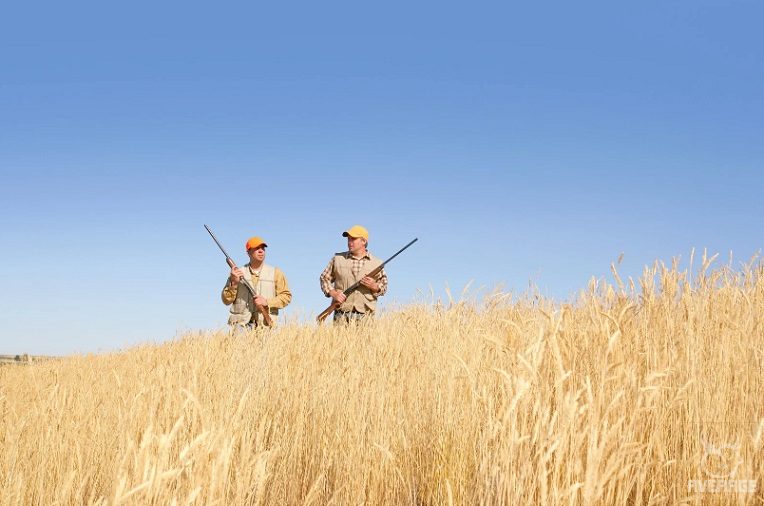Going on a hunt with a partner can be incredibly rewarding, doubling your eyes, ears, and experience in the field. But it also brings added responsibility. Without proper planning, clear communication, and mutual awareness, two hunters can quickly become a liability to each other. At Thunder Guns West, we believe that great hunting partnerships are built not just on trust, but on preparation, shared roles, and the right gear.
From stalking game to managing firearms and coordinating movement, teamwork in the field is about much more than just sharing a blind. Whether you’re hunting whitetail, turkey, or predators, knowing how to move and communicate as a team improves both safety and success.
Establishing Safety From The Start
Before a single round is chambered, partners must be on the same page when it comes to safety. This includes muzzle control, identifying zones of fire, and maintaining awareness of each other’s location at all times. Even skilled hunters can make mistakes when they assume instead of communicating.
Agree ahead of time on:
- Shooting lanes and safe firing angles
- Visual or verbal cues for movement or readiness
- Protocols for approaching downed game or crossing terrain
If your partner is using a scoped bolt-action rifle while you’re carrying a semi-auto shotgun, your setups may require different spacing or rhythm. Make sure each person understands the handling characteristics of the other’s firearm, including action type, effective range, and reloading process.
Assigning Roles In The Field
No two hunters are identical in skill, comfort level, or physical ability—and that’s okay. Smart teams play to their strengths. One person might be more experienced with tracking signs, while the other is a better marksman or navigator.
Some common hunting partner roles include:
- Shooter and spotter: One focuses on locating and calling out targets, while the other prepares for the shot.
- Caller and shooter: Especially useful in turkey or predator hunting, where sound matters more than motion.
- Driver and blocker: For deer drives, one hunter walks through cover while the other waits in ambush at the edge.
When going on a hunt with a partner, assigning roles doesn’t mean locking each person into one job all day—it’s about setting expectations before you head into the field. If both hunters are armed, you can rotate positions. Just make sure you communicate clearly when changing responsibilities or switching sides.
Communicating Without Spooking Game
The ability to communicate quietly and effectively is one of the biggest differences between solo and partner hunting. Loud talking or hand gestures can blow your cover. Successful teams develop subtle signals and a shared sense of timing.
Here are some simple ways to keep communication tight:
- Agree on basic hand signals (stop, go, wait, game spotted)
- Use touch signals or low-volume whispers when close
- Establish a visual check-in system (periodic eye contact, gestures)
In high-pressure moments, especially during a stalk or after spotting game, adrenaline can cause confusion. Practicing these cues during scouting or even at the range helps reduce mistakes when it matters most.
Choosing Compatible Firearms
Firearm selection can influence how smoothly a team functions. For example, if one hunter is using a lightweight rifle chambered in .243 while the other carries a heavier .308 or lever-action .30-30, you’ll want to pace yourselves and coordinate shot opportunities accordingly. If hunting upland birds or waterfowl, a pair of reliable pump or semi-auto shotguns with compatible chokes makes a great combo.
Some partners even coordinate optics setups. One might carry a red dot sight for quick shots in thick cover, while the other uses a scope for spotting movement at a distance. In areas with heavy predator activity or where large game might charge, carrying a sidearm—such as a 10mm or .44 Magnum handgun—can add peace of mind and balance.
Ammo selection matters, too. Bringing shared calibers makes reloading and planning simpler, but it’s not always necessary. Just make sure each person has enough rounds and that no one is stuck carrying unfamiliar cartridges.
Handling Game And Covering Each Other
Once you’ve made a shot, teamwork doesn’t stop. Coordinating the follow-up is just as important. One hunter may need to trail a wounded animal while the other provides backup with optics or a second angle. Moving toward a downed deer? Stay spread out and communicate every step.
Dragging game out of the woods is easier with two people, but it can still be risky in low-light conditions or unfamiliar terrain. One person should keep a firearm accessible at all times—either slung rifle, shotgun, or handgun—while the other handles the animal or gear.
Hunt With a Partner: Building Trust And Rhythm
Hunting with a partner is a long game. The more time you spend together in the woods, the better your rhythm becomes. Trust builds slowly through consistent behavior: following safety rules, pulling your weight, and respecting the land and each other’s decisions.
Even small things—like remembering to bring extra ammo, sharing snacks, or spotting a missed track—can create stronger bonds over time. Good hunting partnerships don’t happen by accident. They’re built season after season.
Final Thoughts
At its best, going on a hunt with a partner isn’t just safer—it’s more enjoyable. Shared success, mutual effort, and reliable communication turn a standard hunt into a story worth telling. But it all starts with clear planning and the right equipment.
Thunder Guns West offers firearms and gear designed for real-world use. Whether you need a sharp new rifle, a trusted sidearm, or a high-quality optic to help your partner spot that first buck of the season, we’re here to help you gear up with confidence—and hunt smarter, together.
